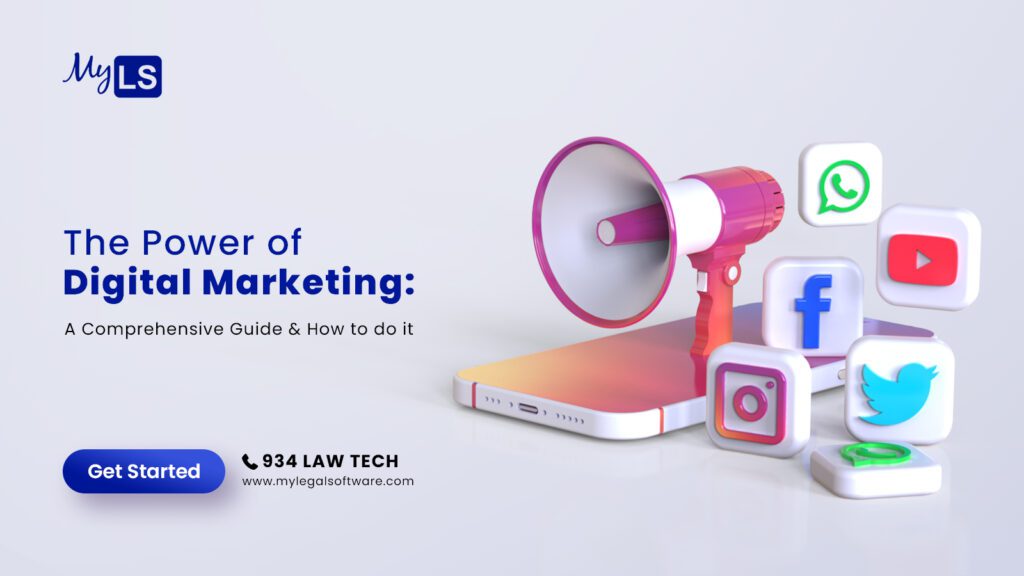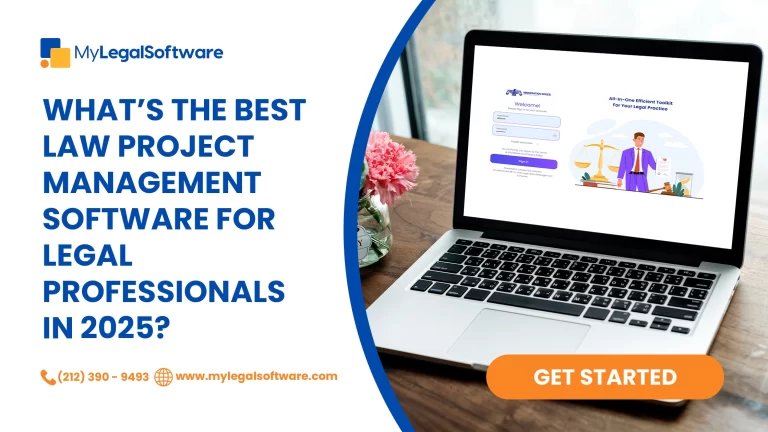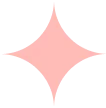In our fast world, most Americans are always connected through devices. Knowing digital marketing is very important.
Digital marketing includes various strategies used by marketing experts to send promotional messages and measure their impact on your customer journey
Digital marketing uses computers, phones, tablets, and other devices to advertise, instead of traditional methods like magazine ads or billboards.
More than 75% of Americans go online every day, with many going online multiple times a day. A surprising 26% spend most of their time in the digital world
The numbers go up a lot when we look at people who use the internet on their phones. 89% of them go online every day, and 31% are almost always connected to the digital world. As a marketer, embracing the digital world isn’t just an option; it’s a necessity.
The power of digital marketing lies in its ability to harness an assortment of digital channels. These include social media, pay-per-click advertising, search engine optimization, and email marketing.
Through these channels, you can not only connect with your existing customers but also engage potential clients, establish a powerful brand presence, and curate an exceptional customer experience.
It’s a dynamic strategy that empowers you to unlock the full potential of your marketing efforts in the digital age. So, let’s embark on this journey and explore the revolutionary power of digital marketing and how it works together.
What is digital marketing?
Source: Slidebazaar
Digital marketing is the art and science of promoting products, services, or brands using electronic devices and the internet. It’s like traditional advertising but tailored for the digital age, where marketers use online tools and platforms (Facebook, Twitter, Instagram,etc) to reach their target audience, convey their messages, and measure the impact of their campaigns.
This can take various forms, such as online ads, social media posts, email marketing, and more. Essentially, it’s the smart and strategic way businesses connect with customers in the digital world.
Distinguishing Inbound Marketing from Digital Marketing
Inbound marketing and digital marketing are two distinct approaches to online promotion and engagement which are easily confused. Here’s a breakdown of their differences:
- Digital Marketing: this encompasses a wide range of online marketing tactics that leverage electronic devices and platforms to reach and engage with the target audience.
It encompasses various strategies such as social media marketing, email campaigns, pay-per-click advertising, and search engine optimization (SEO). In essence, digital marketing employs digital tools and platforms to promote products or services.
- Inbound Marketing: on the other hand, this is a specific marketing method within the digital marketing landscape. It places a strong emphasis on attracting potential customers by providing valuable, relevant, and informative content that addresses their specific needs and interests.
Instead of aggressively pushing advertisements, inbound marketing aims to naturally draw individuals in by offering content that resonates with them. Typical inbound marketing activities include content creation, blogging, social media content development, and email marketing.
The core principle of inbound marketing is to build trust and nurture relationships with the audience, ultimately leading them to choose your product or service when the time is right.
In essence, while digital marketing covers a broad spectrum of online marketing techniques, inbound marketing is a specialized subset that puts the creation of compelling content to organically attract and engage potential customers first.
The Importance of digital marketing
Digital marketing is crucial because it’s like a superpower for businesses in the digital age. It allows companies to connect with people where they spend a significant part of their time – on the internet.
- Vast Audience Reach: It has the ability to reach a massive audience. Almost everyone uses the internet today, whether on their computers or phones, making it a bustling marketplace. With digital marketing, businesses can put their products or services right in front of these potential customers.
- Cost-Effective: Unlike traditional advertising, where you pay a lot to reach a limited audience, digital marketing is cost effective. It’s often more affordable and allows you to target specific groups of people who are more likely to be interested in what you offer.
- Real-time Connection: Digital marketing enables real-time communication. You can instantly chat with customers, answer their questions, and solve problems.
- Data Insights: it has the ability to gather data. With digital marketing, you can see what’s working and what’s not in real-time.
- Competitive Edge: Your competitors are likely already using digital marketing. It’s like a race, and digital marketing gives you the running shoes to keep up or even sprint ahead.
- Global Presence: With digital marketing, your business isn’t confined to one location. You can showcase your products or services to a global audience, breaking down physical barriers.
Distinguishing B2B from B2C digital marketing
B2B Digital Marketing (Business to Business):
- Longer Sales Process: B2B marketing often involves longer decision-making processes. It’s like planting a seed and waiting for it to grow into a tree. Building relationships and trust over time is crucial.
- Logic and Evidence: B2B buyers are usually influenced by logic and evidence. They want to see facts, figures, and data that prove the value of a product or service. B2B digital marketers focus on providing this information.
- Multiple Decision-Makers: B2B decisions often require input from multiple people within an organization. Therefore, B2B marketing materials are designed to be easily shareable and downloadable so that they can be passed along within the company.
B2C Digital Marketing (Business to Consumer):
- Shorter Sales Cycle: B2C marketing usually has a shorter sales cycle. It’s more like a sprint to capture the customer’s attention and convince them to make a purchase quickly.
- Emotional Appeal: B2C customers are often swayed by emotions. B2C digital marketing aims to make customers feel good about a purchase, tapping into their emotions and desires.
- Personal Connections: B2C marketing often focuses on creating one-on-one connections with individual customers. It’s about making each customer feel special and valued.
However, it’s important to note that there can be exceptions. For example, a B2C company selling high-ticket items like cars may provide in-depth and informative content similar to B2B marketing.
The key is to tailor your digital marketing strategy to your specific customer base, whether you’re B2B or B2C. Understanding your audience is essential for creating effective online marketing campaigns that capture the attention of potential customers.
Types of digital marketing
Digital marketing encompasses a wide range of expertise, mirroring the diversity of digital media interaction. Let’s explore some prominent examples of digital marketing strategies.
Search Engine Optimization (SEO)
Search engine optimization (SEO), is a technical marketing tool aimed at enhancing the visibility of web pages in search engine results. Think of it as a combination of art and science.
The scientific aspect involves thorough research and evaluation of various factors to attain the best possible position on a search engine’s results page (SERP).
Source:Freepik
Today, key considerations for effective SEO include:
- Content Quality: Creating high-quality content that resonates with your audience.
- User Engagement: Ensuring your website engages and satisfies visitors.
- Mobile-Friendliness: Optimizing for mobile devices, as more users browse on smartphones.
- Inbound Links: Garnering reputable and relevant websites linking to your content.
- Technical SEO: Managing back-end website components like URLs, loading speed, and fixing broken links to facilitate search engine crawling.
While these factors form the scientific foundation of SEO, the art lies in the uncertainty of search engine algorithms. There is no fixed formula for achieving high rankings since search engines, particularly Google, frequently update their algorithms.
The ultimate goal of SEO is to secure a spot on the first page of search results. This ensures that potential customers looking for products or services related to your brand can easily discover your website.
In the world of SEO, there exists no consistent rulebook for achieving top rankings. The field is ever-evolving. Therefore, digital marketers must closely monitor their webpage’s performance and adapt their strategies accordingly. Google, being a global search engine leader, often takes the spotlight in SEO efforts.
Content Marketing
Content Marketing is a strategic approach to marketing that focuses on creating and sharing valuable, relevant, and engaging content with a specific target audience.
The main goal of content marketing is to attract, inform, entertain, or educate your audience rather than directly promoting a product or service. In content marketing, businesses provide various types of content, such as:
- Blog posts,
- Videos,
- E-books,
- Newsletters,
- Infographics, and more, to offer something of value to their audience.
This valuable content serves as a way to connect with potential customers, build trust, and establish strong relationships. Unlike traditional advertising, content marketing aims to provide helpful information and engage the audience, with the ultimate aim of turning them into loyal customers.
Effective content marketing involves understanding your audience’s needs and preferences, creating high-quality content that is error-free, relevant, and interesting, and guiding your audience towards taking desired actions, whether it’s signing up for a newsletter, requesting a free consultation, or making a purchase.
In essence, content marketing is all about providing valuable content to your audience to build a positive brand reputation, foster trust, and ultimately drive business growth through meaningful and authentic connections.
Social Media Marketing
Social media marketing is the process of using online platforms to drive traffic, increase brand awareness, and engage in discussions with people. It allows businesses to showcase their brand, products, services, company culture, and more. With a vast online audience, social media marketing is a powerful tool for reaching potential customers.
Source: Wise Business Technologies
The major platforms for social media marketing include Facebook, Twitter, Instagram, LinkedIn, and YouTube. The choice of platforms depends on your specific goals and target audience. For instance, if you’re seeking leads for a financial technology startup, LinkedIn, which is popular among industry professionals, is a suitable platform. On the other hand, if you have a B2C business targeting younger consumers, Instagram may be more effective.
Social media marketing is highly engaging, making it a favored method for attracting attention. It’s particularly popular among B2C marketers, with 96% utilizing it according to Crystal Clear Communications, and it’s gaining traction in the B2B sector as well. Many B2B content marketers have increased their social media usage, according to the Content Marketing Institute.
One of the advantages of social media marketing is that it provides built-in engagement metrics, allowing you to assess your reach effectively. You can choose the types of interactions that matter most to your goals, such as shares, comments, or clicks to your website.
Not every social media marketing strategy is focused on immediate purchases. Some brands use it to initiate conversations with their audience rather than pushing for immediate sales, which is especially common among brands targeting older demographics or offering products and services that aren’t impulse buys. The specific approach depends on your social media marketing objectives.
To create a successful social media marketing strategy, it’s essential to follow best practices. Key principles include:
- Producing high-quality and engaging content.
- Responding professionally to comments and questions.
- Adhering to a posting schedule, timing posts for maximum impact.
- Considering hiring social media managers.
- Understanding your audience and their preferred social media channels.
Email Marketing
Email marketing, as part of digital marketing, is a strategy that involves sending targeted messages or emails to a group of people who have shown interest in your brand, products, or services. These emails are designed to engage, inform, and convert recipients into customers or loyal supporters.
Email marketing allows businesses to nurture relationships with their audience, deliver personalized content, promote special offers, and keep subscribers informed about updates or news. It’s a powerful tool for building brand loyalty and driving sales by delivering valuable information directly to a recipient’s inbox.
Effective email marketing involves crafting compelling subject lines and content, segmenting your audience for more personalized messaging, and tracking metrics like open rates and click-through rates to measure the success of your campaigns. It’s an essential component of digital marketing because it provides a direct and cost-effective way to communicate with your target audience and drive desired actions, whether it’s making a purchase, signing up for a webinar, or simply staying engaged with your brand.
Pay-Per-Click (PPC) Advertising
Pay-per-click, or PPC, advertising is a digital marketing strategy where you pay a fee each time someone clicks on your online ads. Instead of paying a fixed amount to display your targeted ads regularly, you only incur costs when individuals engage with your ads. The process of when and where people see your ad involves a competitive auction system.
One of the most common forms of PPC is search engine advertising, with Google Ads being a widely used platform. When there’s an available ad space on a search engine results page (SERP), it triggers an instant auction.
An algorithm assesses various factors to determine the placement of ads, including ad quality, keyword relevance, landing page quality, and bid amount. PPC ads are then displayed prominently at the top of the SERP when someone searches for a specific query.
Each PPC campaign has specific actions or goals, known as conversions, that you want viewers to complete after clicking on your ad. These conversions can be either transactional, like making a purchase, or non-transactional, such as signing up for a newsletter or contacting your business. You can track these conversions through your chosen digital marketing channels to assess the performance of your campaign.
Video Marketing
Video marketing, within the space of digital marketing, is a strategy that involves creating and sharing videos to promote products, services, or brands. It’s a powerful tool for engaging and connecting with your target audience by delivering your message through visual and auditory content.
In video marketing, businesses or individuals produce videos that can take various forms, such as promotional videos, tutorials, product demonstrations, reviews, and more.
These videos are then distributed through digital channels like social media, websites, email campaigns, and video-sharing platforms like YouTube.
The goal of video marketing is to capture the viewer’s attention, convey a compelling message, and encourage specific actions, such as making a purchase, subscribing, or sharing the video.
It leverages the engaging nature of videos to create memorable and impactful experiences for the audience, ultimately driving brand awareness and conversions.
Mobile Marketing
Mobile marketing is a digital marketing strategy focused on reaching and connecting with your audience through their mobile devices, such as smartphones and tablets.
This approach involves delivering messages, advertisements, and content to users via various mobile channels, including SMS and MMS messaging, social media notifications, mobile app alerts, and more.
To succeed in mobile marketing, it’s essential to tailor your content and campaigns to fit the smaller screens and unique user experiences of mobile devices.
With a significant 85% percentage of the population using smartphones, optimizing your marketing efforts for both computers and mobile screens can greatly enhance your reach and engagement with your target audience.
Influencer Marketing
Influencer marketing, as part of digital marketing, is a collaborative strategy where businesses partner with individuals who have a significant and engaged following, such as celebrities, industry experts, or content creators, to promote their products or services.
These influencers leverage their credibility and reach on various social media platforms to endorse and showcase a brand’s offerings to their followers.
This marketing approach is effective for both B2B and B2C companies aiming to expand their audience reach. However, it’s crucial to select influencers carefully, as they essentially become brand representatives, and the wrong choice can negatively impact consumer trust in your business.
Effective Digital Marketing Strategy
Here are some easy-to-understand steps for creating an effective digital marketing strategy to boost brand awareness, engagement, and sales:
- Set Clear Goals: Start by defining specific and measurable goals for your digital marketing efforts. Whether it’s increasing website traffic, growing your email subscriber list, or boosting sales, having clear objectives will guide your strategy.
- Know Your Audience: Understand your target audience’s demographics, interests, and online behavior. This knowledge helps you tailor your marketing efforts to reach the right people with the right message.
- Choose the Right Channels: Identify the digital platforms and channels where your audience is most active. This could include social media, search engines, email marketing, or content marketing.
- Create Compelling Content: Develop high-quality, relevant content that resonates with your audience. Content can include blog posts, videos, infographics, and more. The goal is to provide value and address your audience’s needs.
- Optimize for SEO: Implement search engine optimization (SEO) techniques to improve your website’s visibility on search engines like Google. This helps potential customers find your content when searching for relevant topics.
- Engage on Social Media: Maintain an active presence on social media platforms that align with your business. Engage with your audience by responding to comments, sharing valuable content, and running targeted ad campaigns.
- Email Marketing: Build and nurture an email subscriber list. Send personalized and valuable emails to your subscribers to keep them engaged and informed about your products or services.
- Paid Advertising: Consider using paid advertising campaigns, such as pay-per-click (PPC) ads on search engines or social media advertising. Set budgets and target specific keywords or demographics to reach potential customers.
- Measure and Analyze: Utilize analytics tools to track the performance of your digital marketing efforts. Monitor key metrics like website traffic, conversion rates, and engagement levels. Use this data to make informed adjustments to your strategy.
- Stay Updated: Digital marketing is constantly evolving. Stay informed about industry trends, algorithm changes, and new technologies. Adapt your strategy to remain competitive and effective.
Industries that can benefit from Digital Marketing
1. Legal Practices: Embracing the Digital Age
From a legal perspective, law firms might not be the first sector that comes to mind when you think of digital marketing, but they, too, have recognized the importance of a strong online presence. In the digital age, legal practices are using content marketing and search engine optimization (SEO) to showcase their expertise. Legal blogs and informative videos not only educate the public but also help law firms establish themselves as thought leaders. Furthermore, targeted online advertising helps law firms connect with potential clients in need of specialized legal services.
2. Agriculture: Growing with Digital Marketing
Agriculture, an industry steeped in tradition, may not seem like a natural fit for digital marketing. However, modern agriculture has embraced technology, and digital marketing plays a vital role. Agribusinesses utilize digital strategies to promote innovative farming practices, agricultural equipment, and sustainable farming methods. Through social media campaigns and email marketing, they reach out to farmers and consumers alike, showcasing how technology is transforming agriculture for a greener and more productive future.
3. Luxury Brands: Crafting Exclusive Digital Experiences
The luxury sector has traditionally relied on exclusivity and in-person experiences. Nevertheless, even luxury brands recognize the need for a digital presence. Their unique perspective on digital marketing involves crafting online experiences that maintain their aura of exclusivity. High-end fashion houses, for instance, use digital marketing to create anticipation around limited-edition releases, live-streaming runway shows, and offering virtual tours of flagship stores. These strategies appeal to a global audience of luxury connoisseurs while preserving the brand’s elite status.
4. Environmental Organizations: Mobilizing Change Digitally
Environmental organizations are at the forefront of advocacy for a sustainable future. They have harnessed digital marketing in unique ways to mobilize support. From viral social media campaigns to interactive online petitions, environmental groups engage millions worldwide. Their approach includes leveraging storytelling through multimedia content to convey the urgency of environmental issues. By doing so, they inspire collective action and create a sense of global responsibility for preserving the planet.
5. Healthcare: Humanizing the Digital Experience
In the healthcare sector, digital marketing is not just about promoting services but also about humanizing medical practices. Healthcare providers utilize digital platforms to share patient success stories, offer health tips, and provide timely information during public health crises. Telemedicine, a digitally enabled healthcare service, has also witnessed exponential growth, creating new opportunities for healthcare providers to connect with patients digitally while ensuring personalized care.
Conclusion
Digital marketing isn’t just a tool; it’s a powerful force that can propel your business to new heights. Its ability to connect, engage, and personalize your brand’s message is unparalleled.
In this digital time, it’s not a question of whether to embrace digital marketing but how effectively you can harness its potential. By making it a cornerstone of your marketing strategy, you’ll unlock doors to endless possibilities and pave the way for your business’s growth and success.







